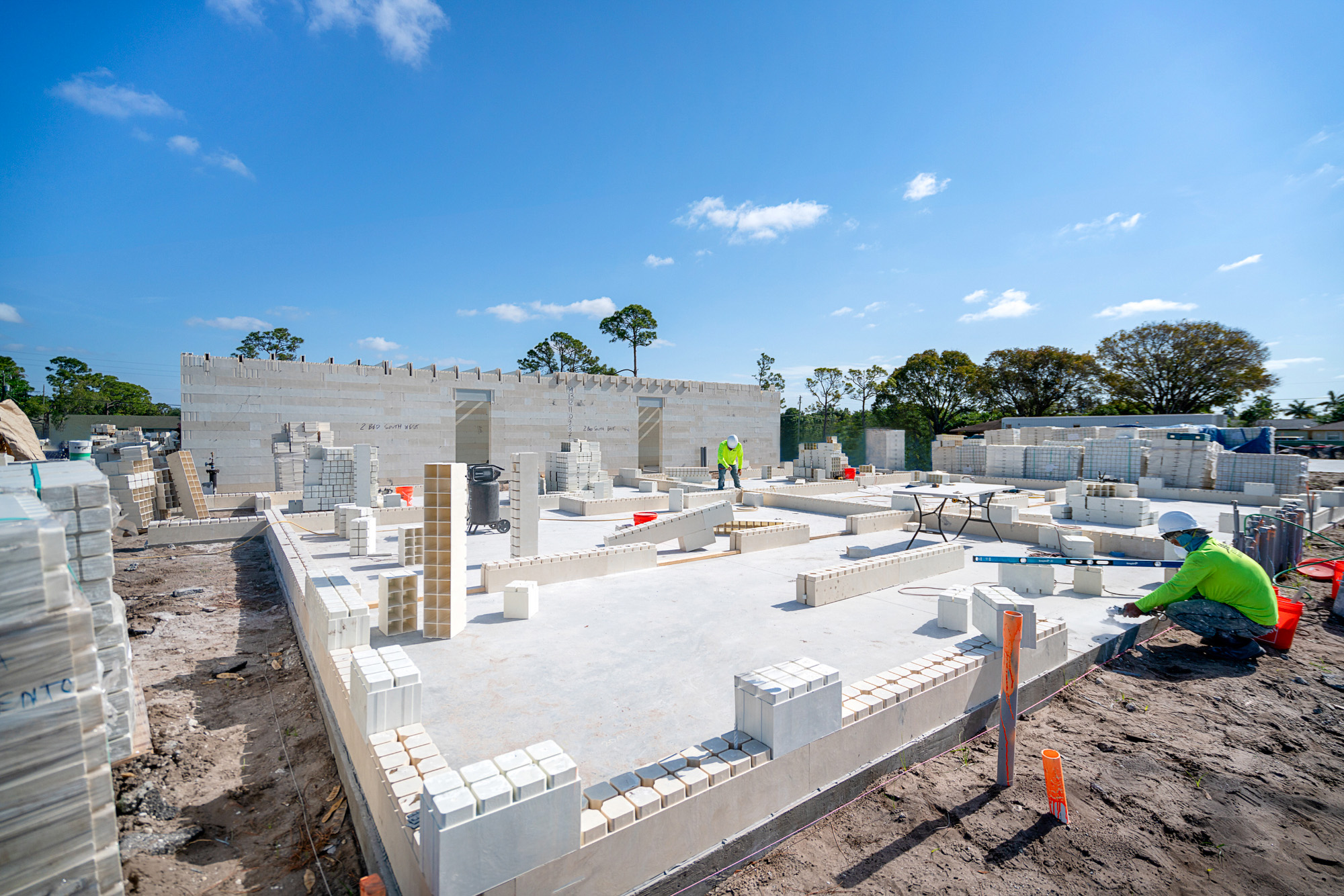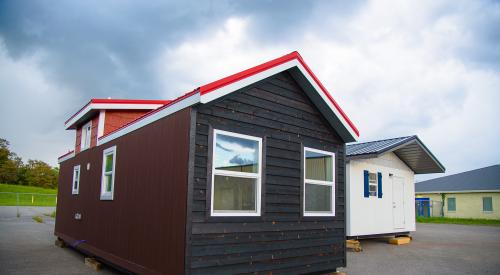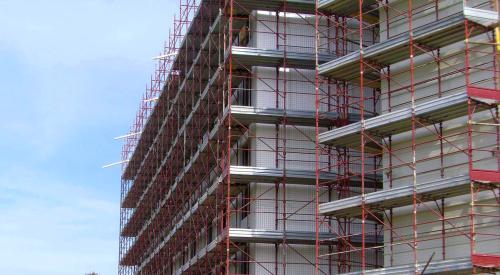A crew leader consults an assembly drawing with color-coded instructions, then calls out a color: blue, red, yellow. Another worker retrieves that color’s corresponding size of building blocks and hands them to a third worker—who uses a mallet to pound each block into place. A fourth worker uses a glue gun to apply a special adhesive that fuses the blocks together.
“They’re like adult-size Legos on steroids,” Kenneth A. Smuts, CEO and president, RENCO USA, says of his company’s interlocking molded blocks. “They’re super simple to install.”
With RENCO’s product and process, a 2,200-sf, single-story home can go up in one day.
There’s no concrete or rebar. No onsite measuring or cutting. No tools other than the mallet and glue gun. No heavy equipment other than a forklift to move around pallets of blocks. And crucially, no need for specialized labor.
Replacing Concrete with Composite Blocks
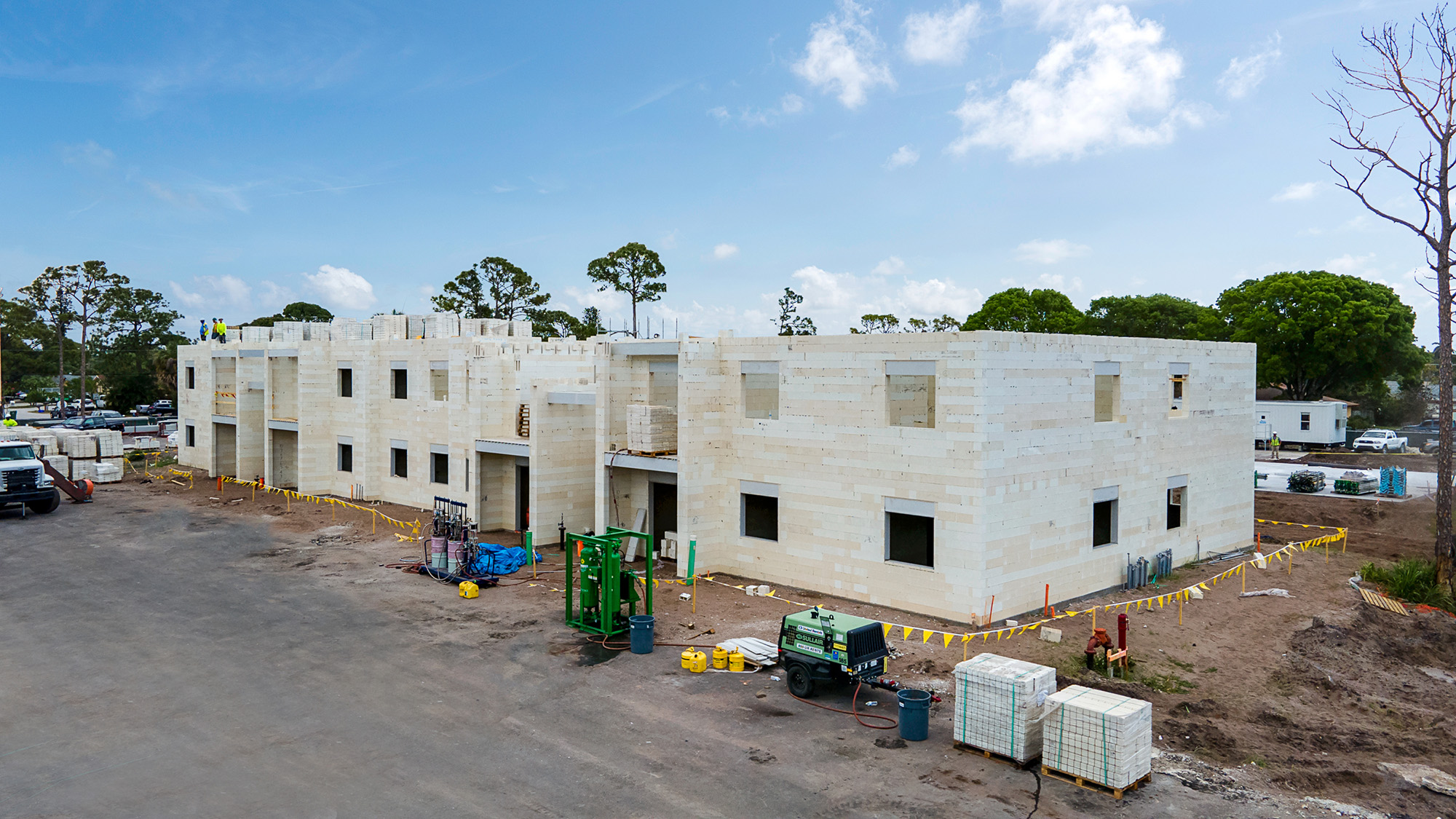
RENCO’s proprietary building blocks replace concrete, steel, and wood. The product comprises recycled glass fibers, recycled plastic, resin, and stone—combined into a composite that the company says is 23 times stronger and 75% lighter than concrete. A typical block of 8 inches by 8 inches by 16 inches weighs about 8.5 pounds—compared to a concrete block’s weight of 37 to 40 pounds, Smuts says.
The blocks come in a variety of sizes and strengths to suit any given geography. In Florida, where the company is based, the blocks can withstand Category 5 hurricane winds.
RELATED: Styrofoam’s Promise for Hurricane-Proof Homes
RENCO’s product, which can be molded into any shape needed, also can form the joists, flooring, and roof beams, so the product makes up the entire frame (though not the foundation). The special adhesive, methyl methacrylate, is used in aerospace, marine, and trucking products.
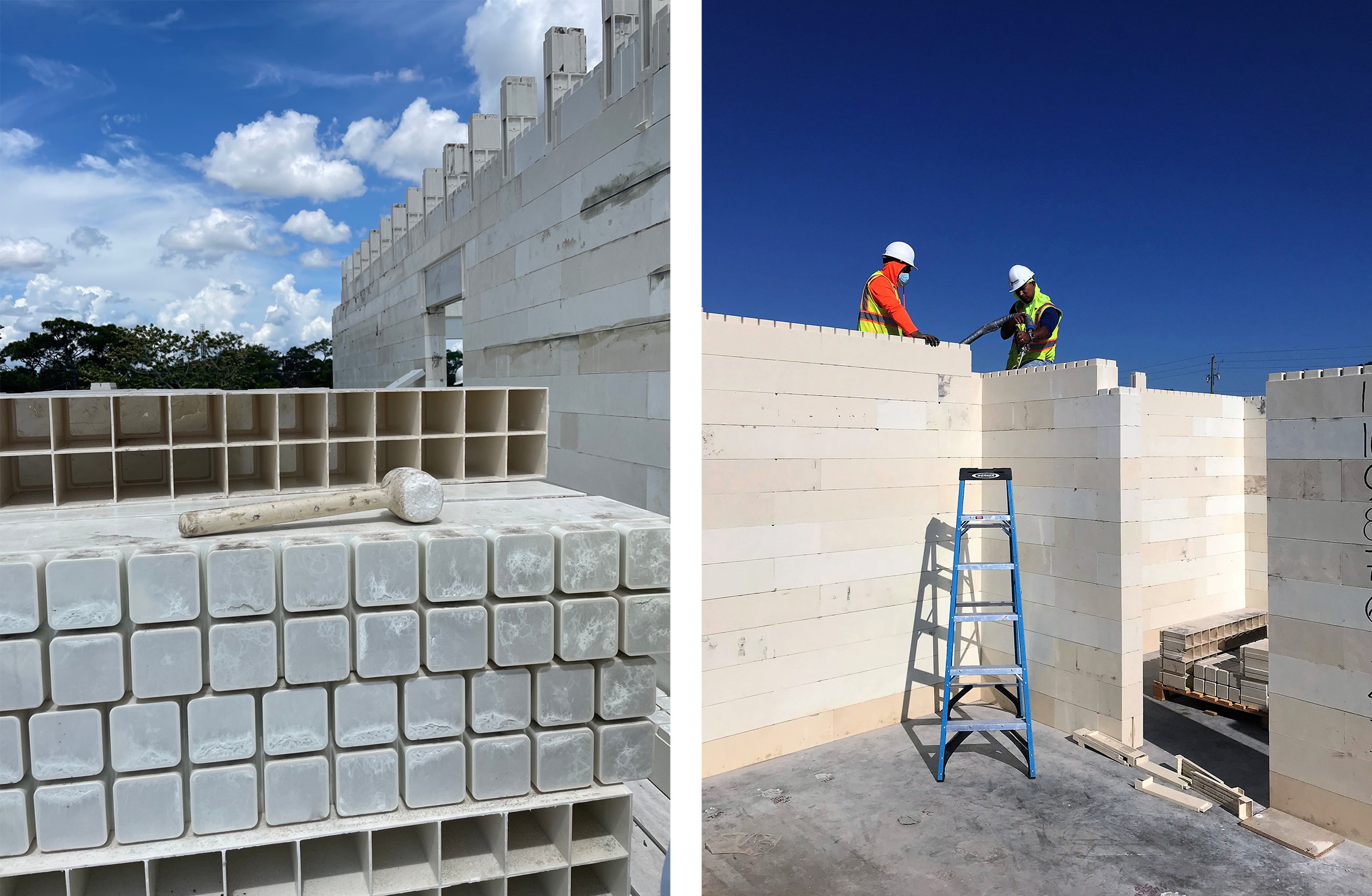
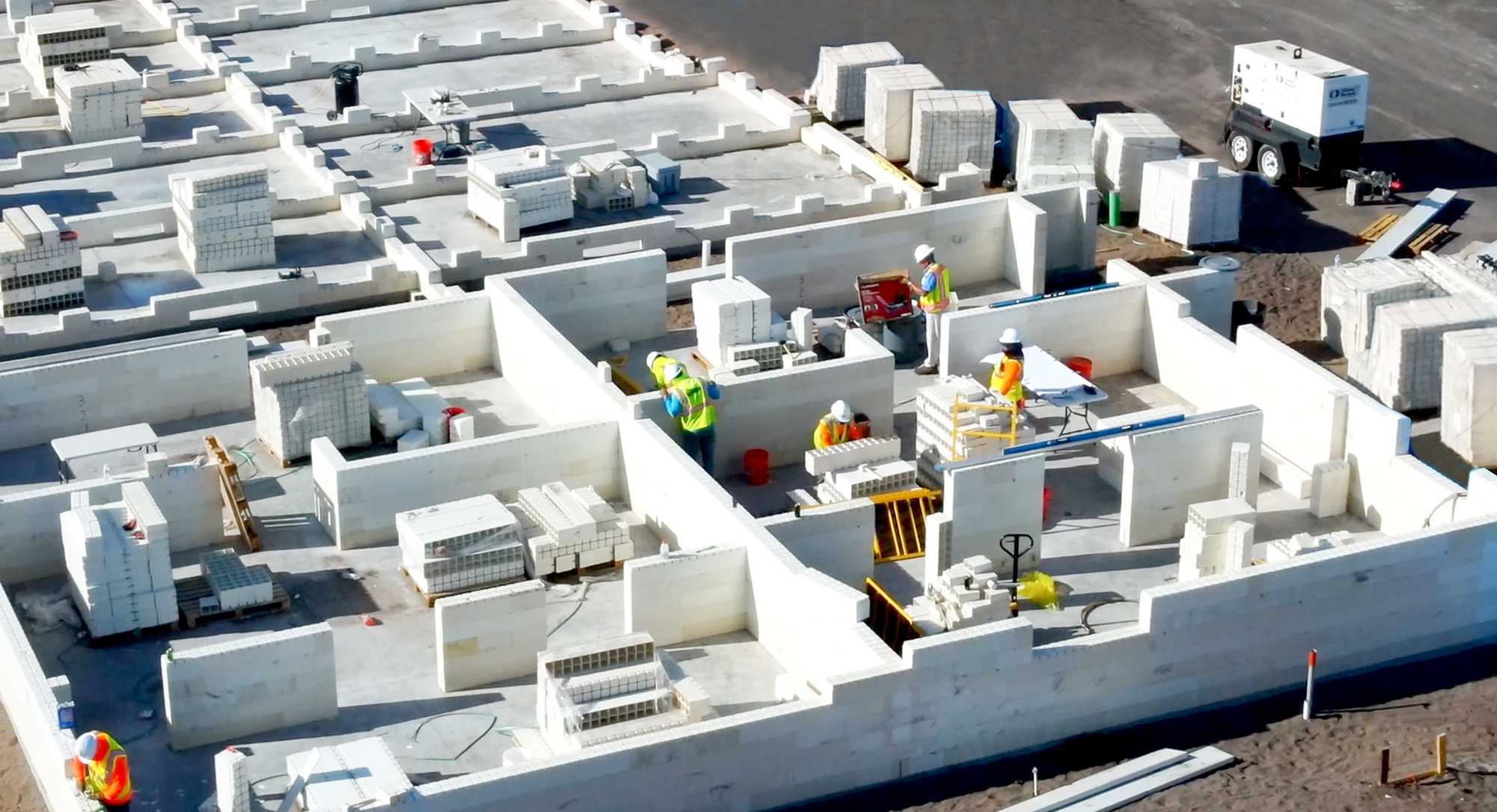
Labor Savings
When they use RENCO’s blocks, builders save on both labor and time, says Smuts, adding that the product saves about 20% to 25% in cost compared to conventional construction.
Case in point: For Renco’s first U.S. project, Lakewood Village in Palm Beach County, Fla., it took 11 laborers just about eight weeks to assemble the four-building, 96-unit apartment complex by following simple color-coded plans. By contrast, a similar development built with concrete and conventional methods would require 50 laborers using heavy equipment and taking about twice as long, Smuts says.
Smuts also touts the product’s sustainability. Up to 40% of the mix comprises repurposed materials. (RENCO is short for “renewable composite.”) The composite also contains far less embodied carbon than structural steel or reinforced concrete. Because the process doesn’t involve cutting materials, there’s minimal waste. And because the product doesn’t have any cellulose, rodents and termites won’t eat it, Smuts says.
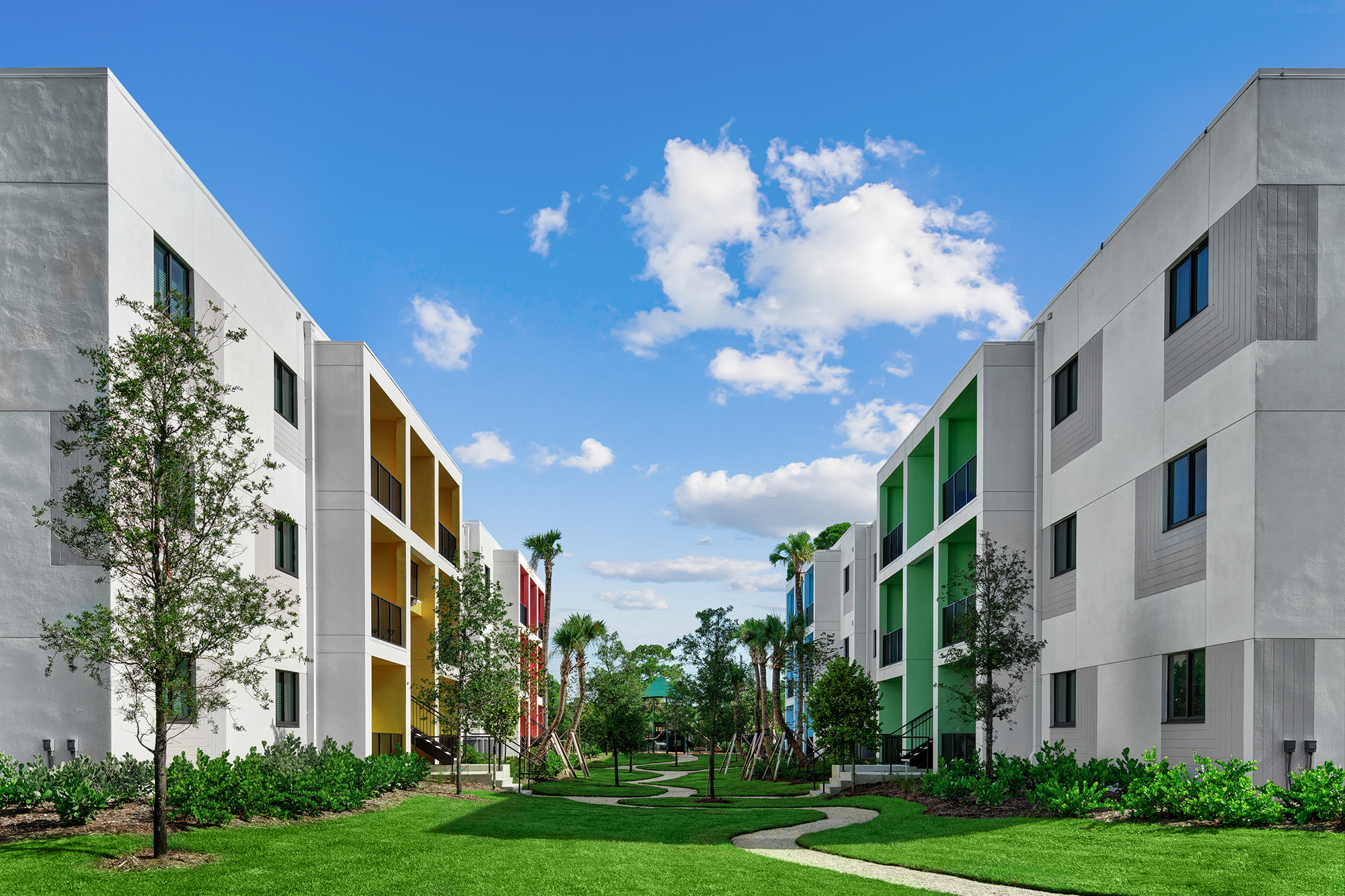

RENCO USA Manufacturing Facilities
RENCO manufactures the components in one of its two factories—one in Manisa, Turkey, the other soon to open in Jupiter, Florida—then ships them to job sites. About 400 buildings in the Middle East have been built using RENCO—everything from apartments to office buildings to warehouses.
RENCO’s U.S. plant will produce enough blocks to build about 6,000 apartment and single-family units per year. The company aims first to target the housing hotspots in its own state, Florida, as well as Arizona and Texas, building factories where there’s demand.
In 2011, RENCO USA was cofounded by businessman Engin Yesil and Thomas P. Murphy, CEO and founder of Miami-based Coastal Construction, one of the largest general contractors in Florida. Company leaders then set out to get their material approved by the International Building Code (IBC). “We thought it would take one year and $1 million. We were wrong,” Smuts says. “It took 7.5 years and tens of millions of dollars.” The use of RENCO is now approved under the IBC.
During 12 years of research and development, the company has conducted more than 400 safety tests—including material, structural, fire, and environmental tests.
“Our goal is to build structures affordably and deliver cost and time savings,” Smuts says. “And hopefully that translates into making housing units more attainable for those who can’t get housing currently.”



